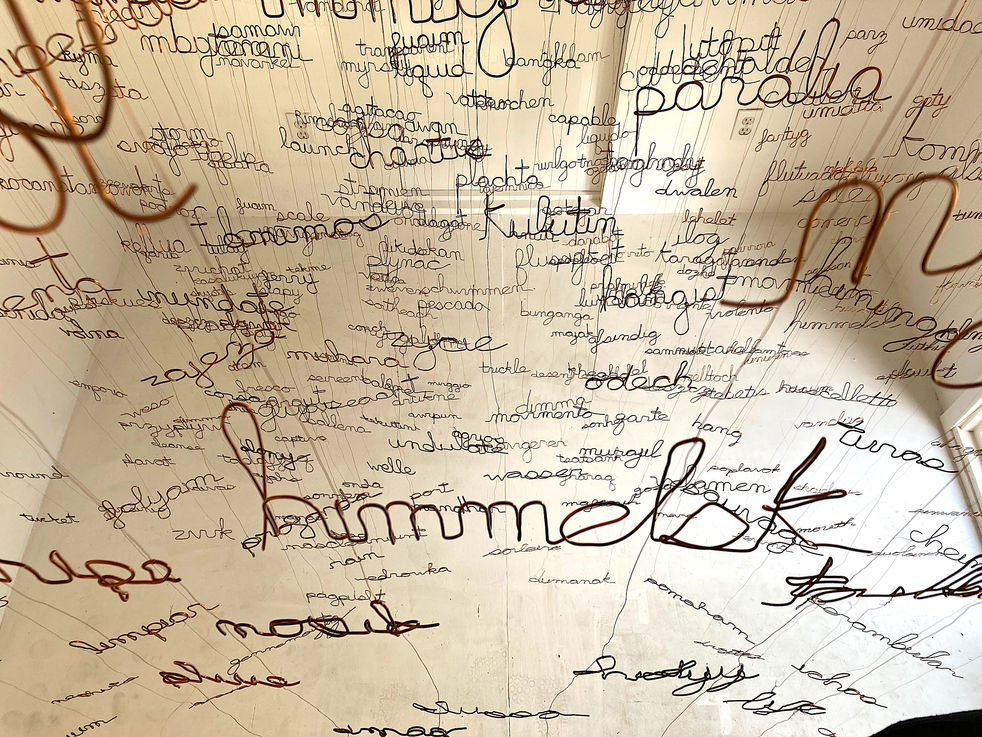We Came By Water
Collaborative Installation By Diane Barceló and Ashby Carlisle
Collaborative site-specific installation by Diane Barcelo and Ashby Carlisle.
ESB Gallery at Sculpture Grounds, Old Lyme Connecticut. 2020-22
This work built upon the previous project, They Came By Water
8' w x 10' d x 12' h, copper wire words in 22 languages with audio loop
Audio voices: Clifford Sebastion speaking Pequot (indigenous Connecticut), Thomas Dabrah speaking Dangbe (Ghana).
These two languages were only oral in the mid 1800s and so are represented in sound.
In the mid-19th century, New London, Connecticut, was the most diverse port city in the United States. People from around the world converged in this bustling city to participate in the whaling industry. The coexistence of their many languages is the inspiration for our sculptural installation. We researched and culled words associated with water from these languages, then formed the words in copper wire and hung them in layers. The resulting word matrix dynamically interacts to echo an imagined space filled with the spoken words. As the vision for “We Came by Water” evolved, an audio component was created to layer the spoken words of Native American and African peoples with languages of the 21st century giving voice to the rich cultural heritage we all share.
We Came by Water: Research
The words in this installation are based on information found in “Ethnic Survey of New London, Connecticut, 1938-44: A resurvey after some twenty years.” by Bessie Bloom Wessel from Connecticut College published in Journal of Sociology, September 1944. (original research published in 1920) Wessel’s ethnic groups from largest to smallest include: Italian, British, German, Irish, Polish, Colored, French, Albanian, Armenian, Belgium, Czech, Danish, Dutch, Finnish, Greek, Hungarian, Lithuanian, Filipino, Portuguese, Russian, Scandinavian, Spanish, Swiss, and Syrian. Non-whites were put in one category called “colored” which included native people as well as Africans. The native people’s language, Pequot, is an oral language. We used resources at the Mashantucket Pequot Museum and the online Mohegan Language Project to identify transliterated words for the installation. We also know from the Amistad records, that there were Mende people here from Sierra Leone. This language was an oral tradition until the early 1920s. Thus, we have no written words in Mende to represent that population living in New London.
The audio recording is Pequot words spoken by Clifford Sebastian and Dangbe words spoken by Thomas Dabra from Ghana.
Resources:
We Came By Water, Sculpture Grounds
Jason Mancini - https://indianmarinersproject.com/
Mohegan Dictionary - https://www.mohegan.nsn.us/about/information/restoration-project (Currently under reconstruction)
Mohegan Pequot Language - https://moheganlanguage.net/ and http://www.native-languages.org/mohegan.htm
https://www.jstor.org/ - Journal of Sociology, September, 1944.

